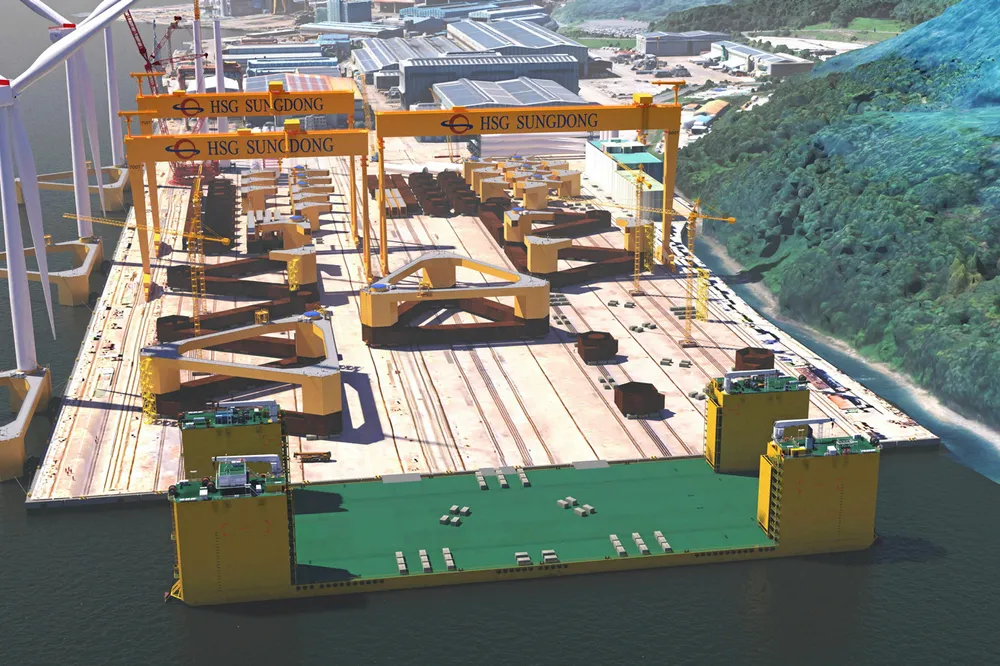South Korea tipped for floating wind leadership as analyst charts offshore ups and downs
Ambitions for operational gigawatts of floating wind are being pushed into the next decade, but 2024-25 could see Korean lift-off

South Korea was tipped for a floating wind leadership role in a global market set to flourish next decade after a shorter-term contraction in expectations.
The market intelligence firm put total global ambitions at 807GW, up from an estimate of 758GW published just six months ago, despite recent downward revisions in forecasts for offshore wind delivery by 2030 and 2035, especially in floating.
The forecasts — which are based on the capacity of projects at least starting offshore installation by the end of a given year — predicted offshore wind (both fixed and floating) to reach 258GW by 2030 and 563GW by 2040.
The study found that 73.1GW of offshore wind is now fully commissioned globally, up by 3.6GW from the previous quarter. China still leads with 34.8GW, followed by the UK (14.8GW) and Germany (8.2GW).
China and US
Analysis showed China consolidating this lead, with offshore wind capacity forecast to reach 75.6GW by 2030 and 125.8GW by 2040.
Recent offshore projects spawned by local and regional arms of government were interpreted as the latest sign of “great ambition” in China and forecast that the country will achieve an average annual installation rate of 6GW between 2024 and 2030. China is pursuing a current target of 54.9GW by 2025.
The recent retreating trend in US forecasts was also halted, with the forecast remaining stable at close to 24.5GW
“Although supply chain concerns are a persistent issue in US offshore wind, development remains ambitious” the reported noted.
The US Department of the Interior’s released of an updated five-year auction roadmap with 12 potential auctions in the pipeline before 2030 was among the positive factors cited there, as was the proposed sales notices that were opened for eight areas in the Gulf of Maine (15GW), and also for Coos Bay and Brookings off Oregon (3GW).
Floating freefall...
For floating wind, the forecast fell to 7.3GW installed or underway by 2030, down from 8GW in the report that was issued for the first quarter of 2024.
Barely 3GW was forecast operational by 2030 as many of the projects will still be in the installation phase.
By comparison, the firm’s floating wind report from June 2023 had forecast that the world would have 12.4GW of floating wind installed or underway by 2030, corresponding to 6-7GW operational.
The list of factors explaining the retreat included:
- The US forecast has been adjusted downwards by 1.4GW due to the first California projects no longer seeming viable before 2030
- South Korea’s forecast was adjusted downwards by 1GW, reflecting lower confidence in all projects reaching installation before end-2030, particularly Munmu Baram after 80% owner Shell’s exit
- The UK forecast decreased by 700MW after the no-bid Allocation Round 5 (AR5) and slower-than-expected consenting
- Norway’s forecast was negatively impacted by delays in the Utsira Nord site auction, now expected to start in 2025.
The 2035 forecast also dropped to 30.6GW at least beginning installation, from 38.8GW previously. This reflected factors ranging from delays to Munmu Baram and uncertainty about Ulsan extension projects in Korea to the slow pace of the California projects and lack of clarity on Ireland's plans for floating wind.
Despite its uncertainties, the report said South Korea is likely to be the country leading the floating wind pack by 2030, with 2.8GW of projects in the Ulsan cluster expected to start offshore construction before the end of the decade.
TGS-4C Offshore saw 2024 and 2025 as potentially pivotal to the success of these first Korean projects, with the breakthrough participation of floating technologies in the third and fourth rounds of offtake tendering.
“Supposing these projects can secure contracts, [final investment decisions] can be made in 2025-26 to kick off multiyear fabrication before multi-year installation campaigns, the report stated.
...to floating boom
The longer term forecast for floating wind was for robust growth, with 30.6GW to at least reach the offshore installation phase by 2035, and 70.9GW by 2040.
The US could have more than 10GW of floating wind by the end of 2040. “providing that the California projects can secure offtake mid-to-end-decade and that Oregon and Maine can be leased successfully,” TGS-4C Offshore stated
The firm’s index of “market attractiveness” which ranks the world’s most advanced floating wind markets across seven factors that influence project development showed that the United Kingdom remains the world's most attractive market in this category based on strengths in consenting, leasing, tendering, and incentives.
It said the UK’s AR6 offtake round will be a watershed for whether any commercial-scale floating wind project can be delivered in the UK before 2030 with South Korea, France and Norway following “closely behind”.
(Copyright)